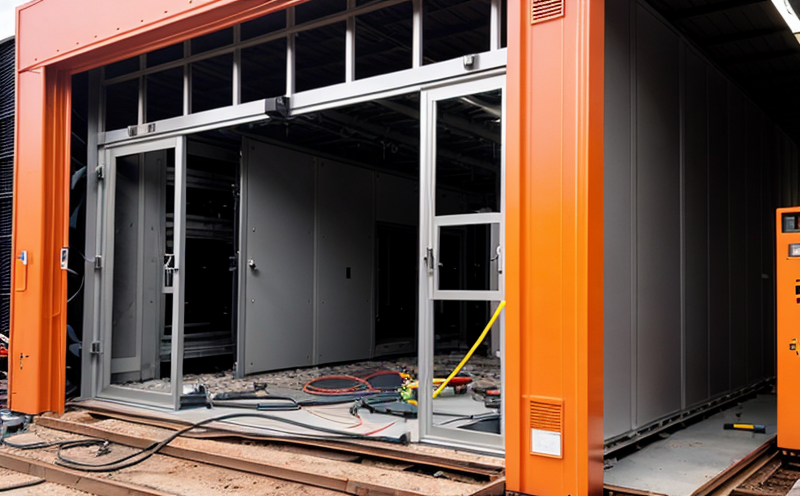DIN 40736 Thermal Testing of Stationary Lead-Acid Batteries
The DIN 40736 standard is a pivotal document in the field of stationary lead-acid battery testing, focusing on thermal stability and safety. This test ensures that batteries meet stringent requirements for thermal management under various operational conditions. The primary goal is to assess how well these batteries can withstand extreme temperatures without compromising performance or posing safety risks.
Thermal stability is critical in ensuring the longevity and reliability of stationary lead-acid batteries used in a wide range of applications, from telecommunications towers to uninterruptible power supplies (UPS). The standard provides a framework for manufacturers to demonstrate compliance with international safety regulations. By adhering to DIN 40736, companies can enhance their product’s reputation and ensure it meets the necessary quality benchmarks.
The testing process involves subjecting batteries to controlled temperature variations within specified limits. This helps in evaluating how well the battery performs under both high-temperature (up to +85°C) and low-temperature (-40°C) conditions. The test parameters are critical for understanding the thermal behavior of the battery, which is essential for its safe operation.
The DIN 40736 standard also covers various aspects such as the physical dimensions, weight tolerance, and electrical performance characteristics of the batteries. Compliance with these standards ensures that the product meets the required safety and performance levels, thereby reducing the risk of failure in critical applications.
One of the key advantages of this testing protocol is its ability to identify potential weaknesses early on during development or manufacturing processes. This proactive approach helps manufacturers address issues before they become significant problems, ultimately leading to higher-quality products and enhanced customer satisfaction.
The test involves placing a sample battery in a thermal chamber where it undergoes temperature cycling according to the specified protocol. During this process, detailed measurements are taken at regular intervals to monitor changes in voltage, internal resistance, and overall performance. These metrics provide valuable insights into the battery’s behavior under different thermal conditions.
A critical part of the DIN 40736 testing procedure is the evaluation of the battery’s ability to maintain its electrical characteristics over time. This includes checking for any significant changes in terminal voltage, specific gravity (for flooded batteries), and internal resistance. Any deviations from the expected values could indicate potential issues that need immediate attention.
Once the thermal test has been completed successfully, a detailed report is generated. This document summarizes all the findings from the testing process, including any anomalies observed during the procedure. The report serves as an important tool for quality assurance teams to review and improve upon future iterations of the product.
In conclusion, DIN 40736 thermal testing plays a crucial role in ensuring that stationary lead-acid batteries are safe, reliable, and capable of withstanding varying environmental conditions. By adhering to this standard, manufacturers can produce high-quality products that meet industry standards while minimizing risks associated with poor performance or failures.
| Application | Description |
|---|---|
| Telco Towers | Ensuring uninterrupted communication systems. |
| Data Centers | Supporting continuous data processing and storage. |
| UPS Systems | Maintaining power supply during outages. |
Competitive Advantage and Market Impact
- Enhances product reliability and safety.
- Meets stringent international standards, gaining market acceptance globally.
- Promotes innovation by identifying potential weaknesses early.
- Aids in cost management through preventive measures against failures.
Use Cases and Application Examples
The DIN 40736 thermal testing protocol is widely used across various sectors where reliable power supply is paramount. For instance, in the telecommunications industry, ensuring that batteries can operate effectively even during extreme weather conditions is crucial for maintaining service reliability.
In data centers, uninterrupted power supply is essential for minimizing downtime and ensuring continuous operation of critical systems. By adhering to DIN 40736 standards, battery manufacturers can provide reliable solutions that meet these demanding requirements.
For uninterruptible power supplies (UPS), the ability to maintain performance during thermal stress is vital. This ensures that when there’s an outage or fluctuation in mains supply, the UPS can continue providing stable electricity without interruption.





